One might logically figure that drift boats just…drift. That the river current is their main source of locomotive power. And a long set of lightweight oars are more for maneuvering than for serious forward or reverse motion.
Jason Cajune, who designs and builds premium wooden drift boats at his Montana Boatbuilders shop near the Yellowstone River, says a lot of fly-fishing guides view their boats simply as a form of transportation rather than as a tool to help them catch fish. “I see a lot of guides take their clients down the river and drop them off on a bank to fish from shore. That doesn’t make any sense to me.”
To be sure, rowing a boat upstream with three persons aboard can be strenuous and a good upper-body workout. The same can be said of working quickly from one side of the river to the other to get within casting distance of a good-looking eddy where a trout might lurk in the shadow of the bank, playing the current. In between these bursts of activity, manning a drift boat is indeed quiet, reverent work, the hull making no sound or leaving any wake as it moves at the same speed as the current. It’s not unlike a ride in a hot-air balloon—silent and seemingly inert, suspended in its medium.
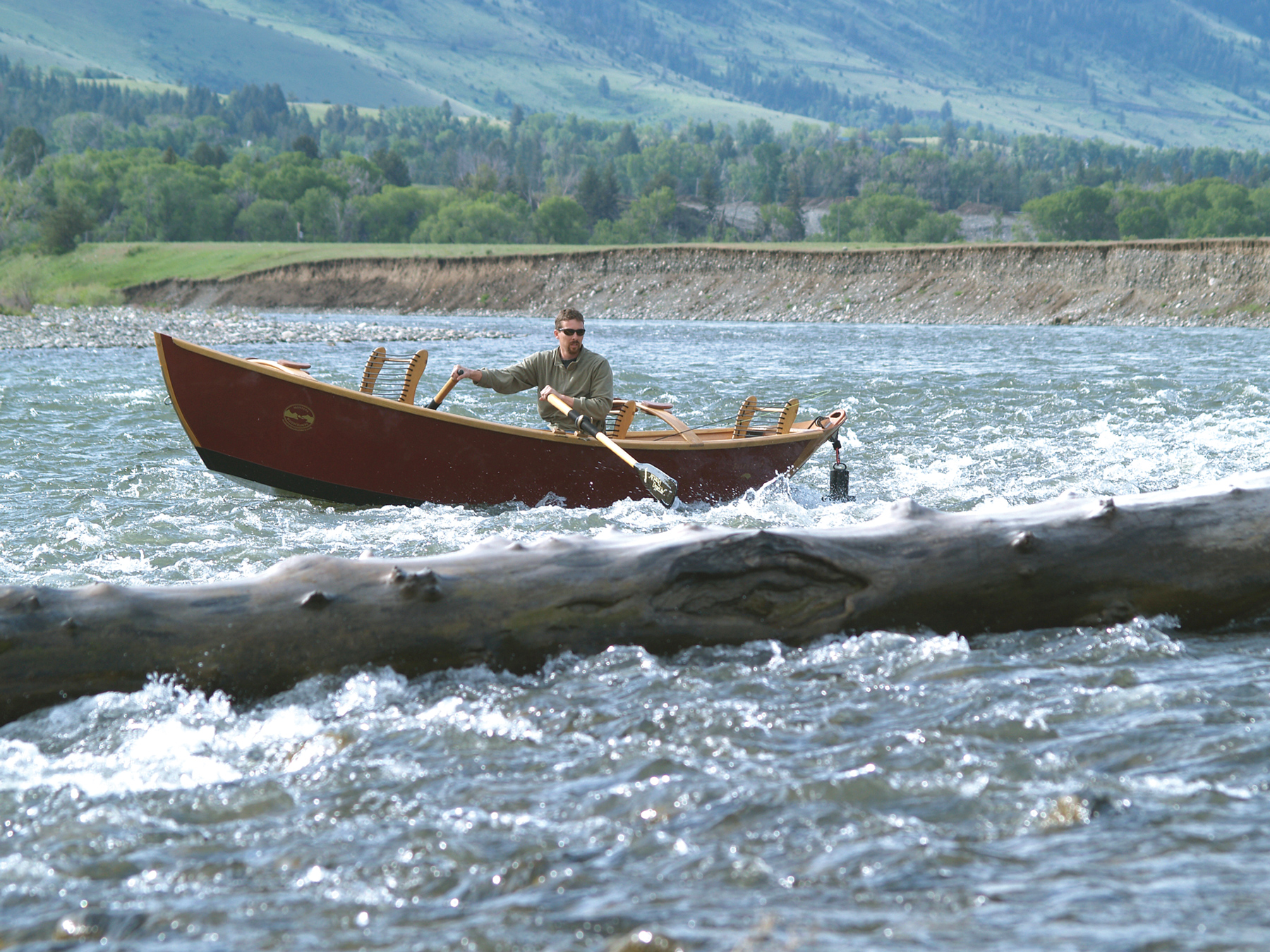 Photo by Dan Spurr
Photo by Dan SpurrDrift boats, whose lineage goes back to the McKenzie River type from Oregon, have proven to be nimble whitewater boats and excellent fly-fishing platforms. The Freestone Classic 15 model, by Montana Boatbuilders, is available in kit form.
The basic drift boat form evolved from various sources: among the boats that made their way from the East Coast to the West Coast in the 19th century were log-driving bateaux and fishing dories. These flat-bottomed types were later adapted for use on Oregon’s McKenzie and Rogue Rivers, where they were given considerably increased rocker to help them confront whitewater. Their ends are fine, and some early drift boats were double-enders. The stern probably would still be as pointed as the bow were it not convenient to lead an anchor rode over a transom. Drift-boat anchor systems are marvelously simple: a small grapnel-type anchor is suspended over the transom at the end of its rode, where it is remotely deployed and retrieved by the helmsman, who never has to leave his seat. A cam cleat secures the rode.
On a fine spring morning, Cajune and I floated one of his Freestone Classic models down the Yellowstone River from Pine Creek to Carter’s Bridge, a distance of about seven miles. To the east the jagged summits of the Absaroka Mountains were still snow-covered, and to the west the early sun shone on the sage-covered backside of the Gallatin Range, the soil reddening in the light. Ospreys and eagles flew over the river looking for the same thing we were: trout. It was, Cajune said, a “guide’s holiday,” one of those few precious days between the Mother’s Day hatch, which marks the traditional beginning of the summer fishing season, and the arrival of tourist fishermen from around the country and the world. I manned the oars while Cajune cast a streamer into the eddies forming along the banks. “Fish like slower water near shore,” he said, “because they don’t have to work as hard, and they feel safer from birds, but they also want to be near fast water where the food is.”
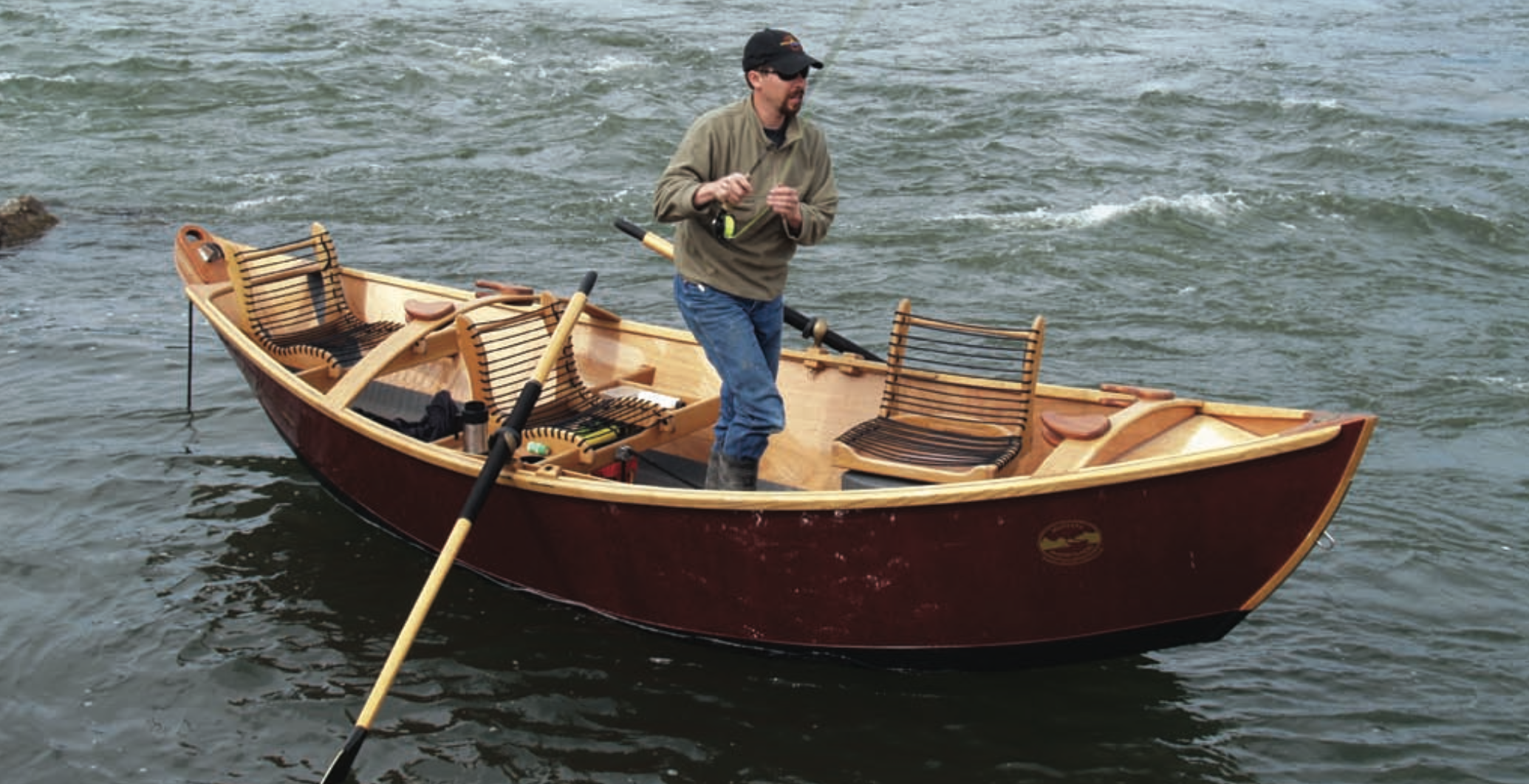 Photo by Dan Spurr
Photo by Dan SpurrWith the grapnel set, the drift boat stays put while the fisherman focuses on his casts. The athwartship timbers are fitted with thigh braces, giving two fishermen plenty of support while at anchor or while the oarsman brings them near the best fishing holes.
Because the drift boat is essentially flat-bottomed, construction logically lends itself to plywood, taking good advantage of its superb physical properties. Owing to their relatively small size—nearly always under 20′ and often less than 16′ long—many drift boats can have topsides and bottoms built from two sheets of plywood scarfed together. The 4′ width of standard plywood sheets has, to an extent, dictated the design of wooden drift boats. At Montana Boatbuilders, the choice is 9mm (3⁄8″) okoume mahogany plywood panels stitched and glued together, though stitched and taped is a more accurate description of modern methods in which narrow strips of fiberglass cloth or “tape” are applied to the seams on top of fillets, and wetted out with epoxy resin. In the finished boats that Cajune builds for his clients, the standard bottom is a sandwich of fiberglass and Kevlar over a honeycomb core, with an exterior covering of a 1⁄4″-thick high-density polyurethane material that can withstand a sharp strike from a rock. The inside of the bottom panel is given a coating of Speedliner, a rubberized material designed for truck bed liners. It won’t dent if a tool is dropped on it and also provides excellent traction. This type of bottom construction is optional with Montana Boatbuilders’ kits; the standard kit is built out of plain plywood. In either case, the bottom is the jig around which the topsides are formed.
None of Cajune’s designs have frames. The narrow, radiused transom of the Freestone Classic is made up of three layers of 3mm plywood. (For the kits, a simpler flat transom is included, but a builder wanting a radiused transom could laminate his own.) White oak is used for gunwales, bench seats, and most other trim, especially if it needs bending.
After a few miles on the river, Cajune handed me the rod in exchange for the oars. “Okoume is hard to beat for strength-to-weight ratio,” he said. “A good plywood boat is much lighter than one in fiberglass or aluminum.” And a lighter boat, he added, is easier to row upstream. “When you find a spot in the river you want to fish,” he continued, “a good guide will work the boat in a loop so he can return to the spot.” That means rowing upstream and across the current, which requires effort, but effort that is diminished by a lightweight, easily maneuverable boat. A light boat also is easier to hold stationary in the current, or, if you want to have a little fun, surf a standing wave.
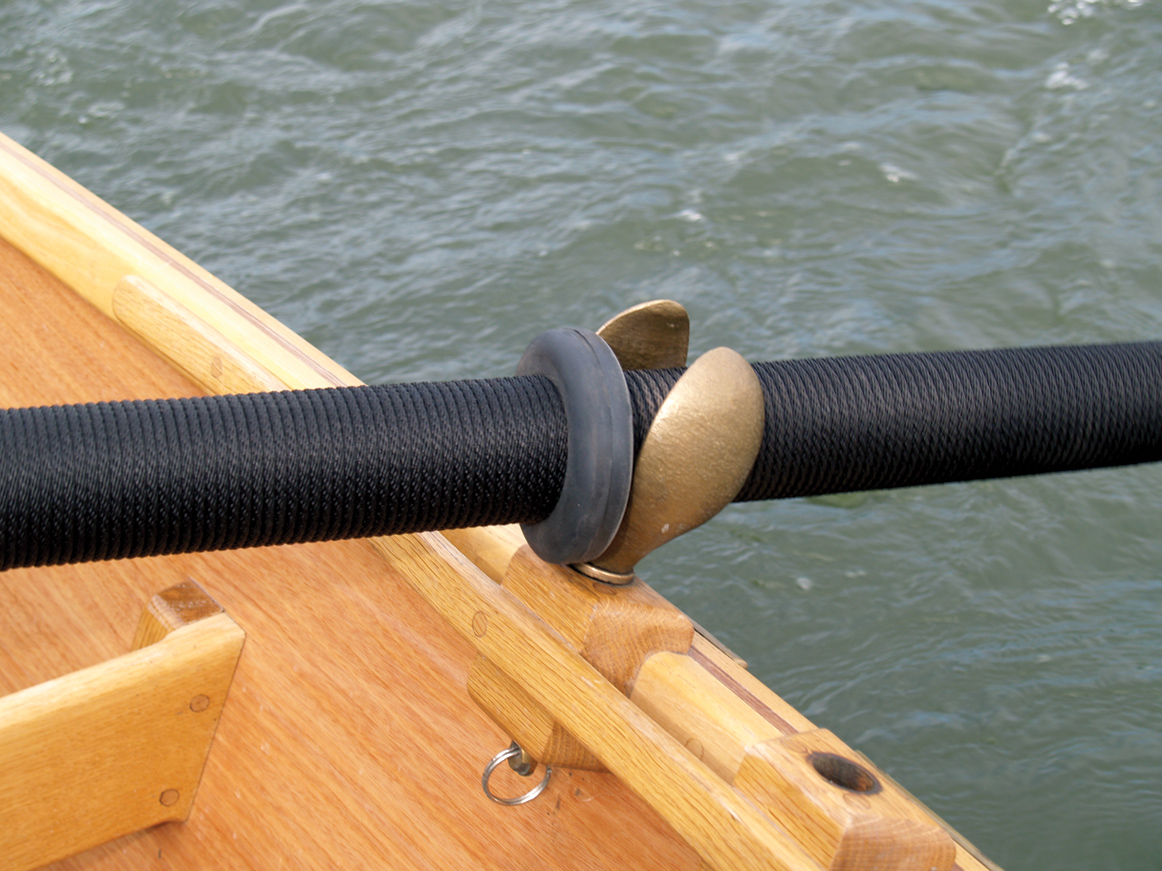 Photo by Dan Spurr
Photo by Dan SpurrSawyer Cobra oarlocks are an accessory designed to work well with rope-wrapped oars for whitewater rowing.
Kits are available for the company’s 13′, 15′, and 16′ Freestone Classic models and the 15′ and 16′ Freestone Guide models, but not for the more complex Kingfisher and popular Recur ve design. The Recurve’s sheerline rises dramatically amidships. Forward and aft, the sheerline takes pronounced dips to reduce freeboard, making it easier to get in and out of the boat; drift boats aren’t accessed from docks, but from some pretty awkward places. Around here, the shorelines often are choked with cottonwood and willows. Cajune’s larger models have more beam at the chine—up to 58″ as opposed to 48″— and so are more stable, enabling an angler to stand more securely at the rail to reel in a fish. Beam at the oarlocks ranges from 64″ to 75″.
Cajune has invested in a small CNC (computer numerically controlled) machine for precision cutting of pieces. Kits include all necessary wood, fiberglass, fastenings, and epoxy. They’re designed for home builders who are expected to supply their own tools, sandpaper, paint, and varnish. A 60-page step-by-step manual with photos and drawings is included, and a DVD is in the works. Advanced woodworkers might simply purchase the plans.
When we hauled the boat out at Carter’s Bridge, a fellow sauntered up admiringly. “That’s a damned fine-looking boat,” he said. Such words are seldom bestowed on fiberglass and metal drift boats.
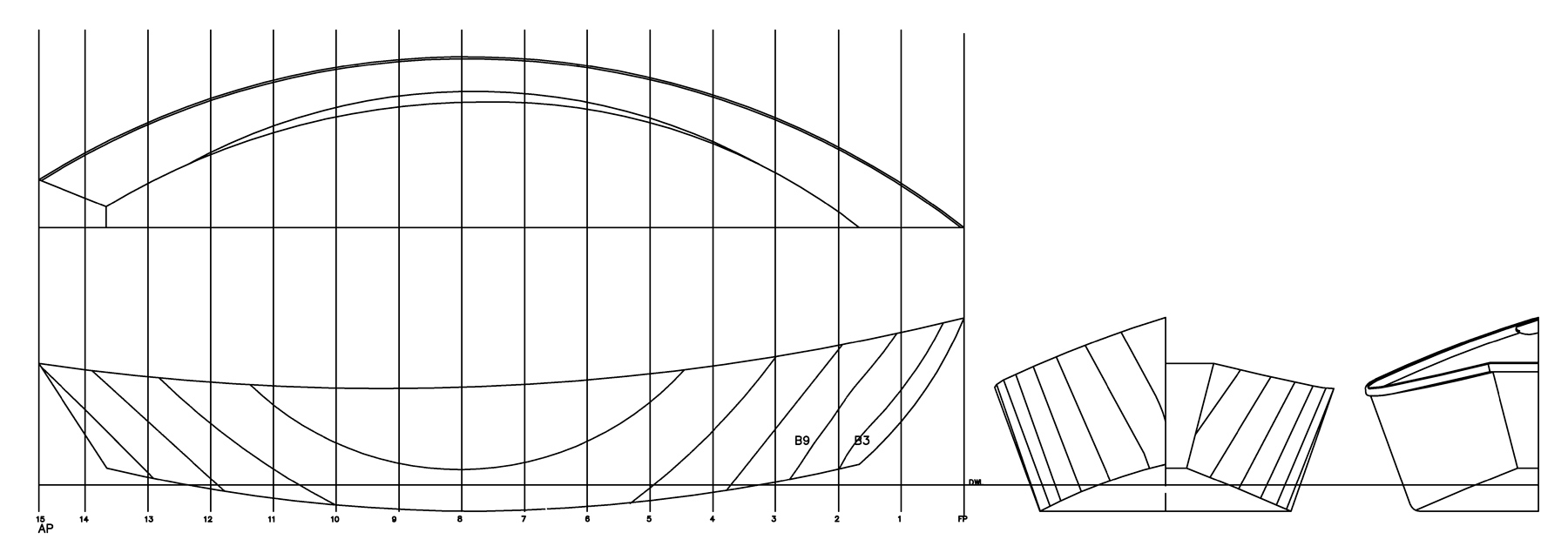 Montana Boatbuilders
Montana BoatbuildersFlat-bottom and straight-sided construction make plywood the logical planking material for a drift boat. A 60-page manual accompanies both plans and kits.
This Boat Profile was published in Small Boats 2008 and appears here as archival material. If you have more info about this boat, plan or design – please let us know in the comment section.
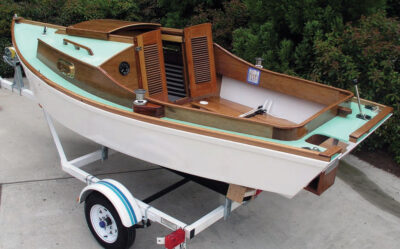
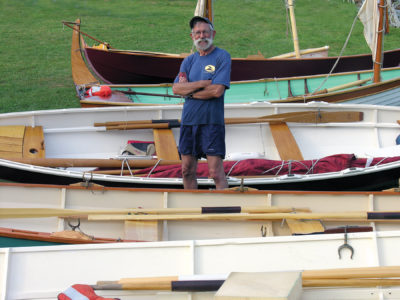
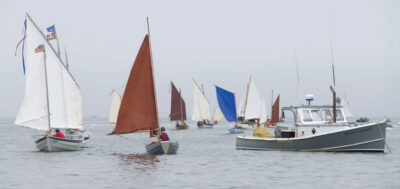
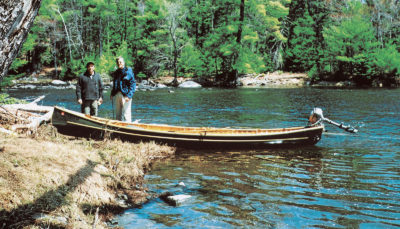
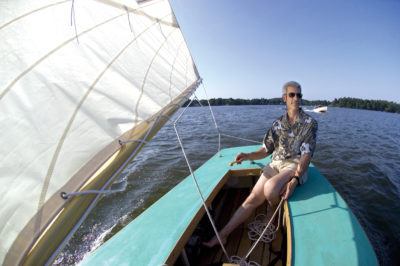
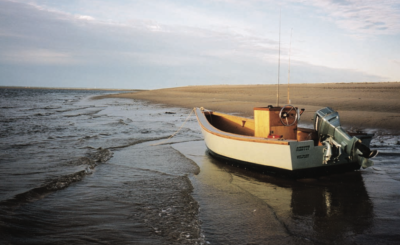
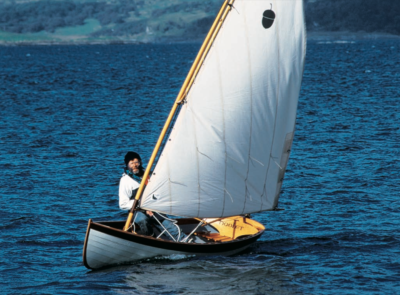
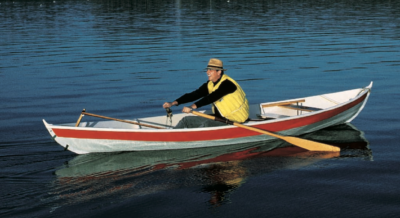
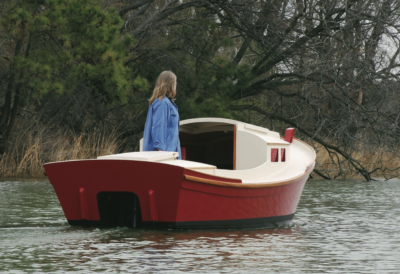
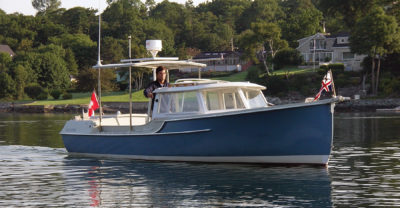
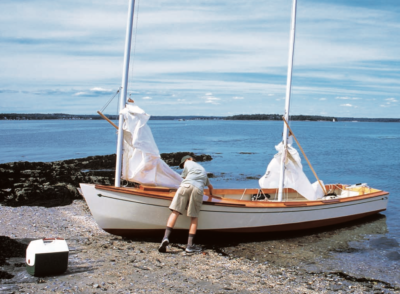
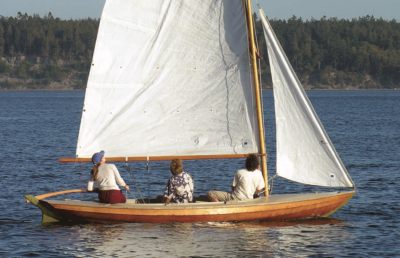
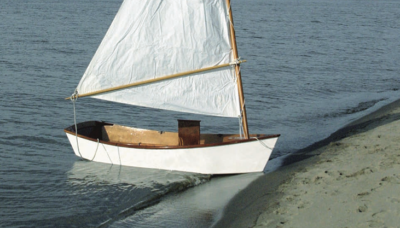
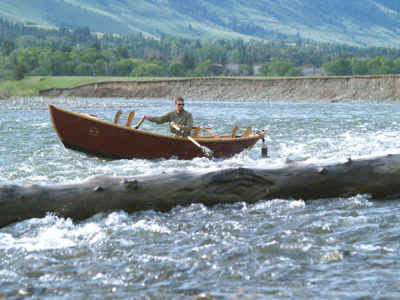

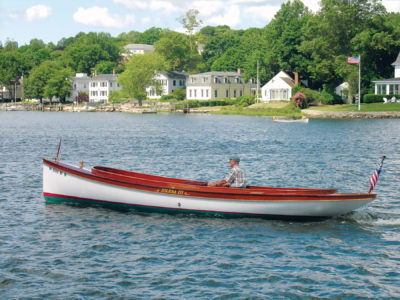
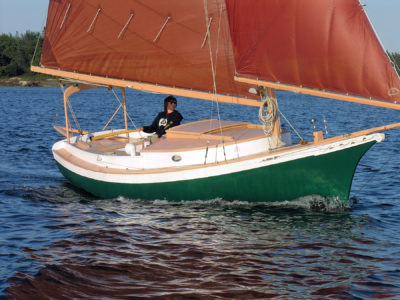
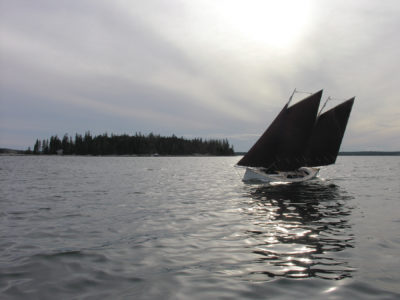
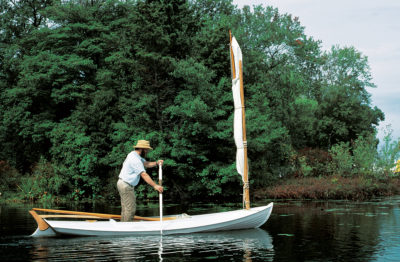
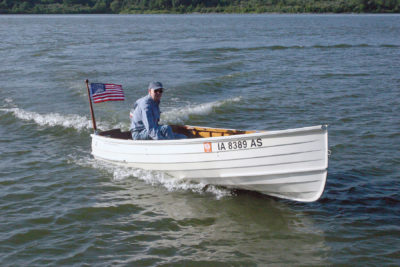
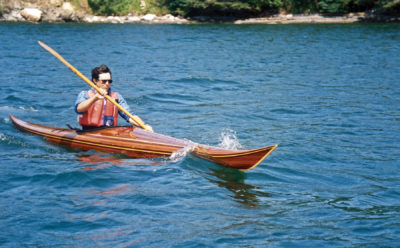
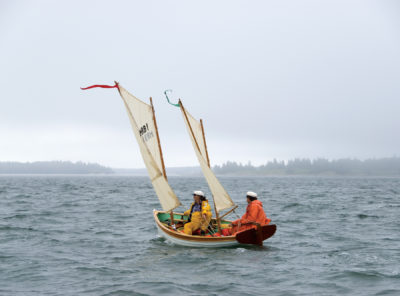

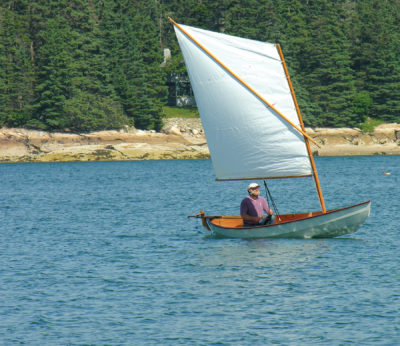
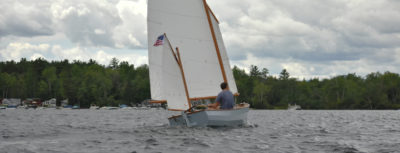
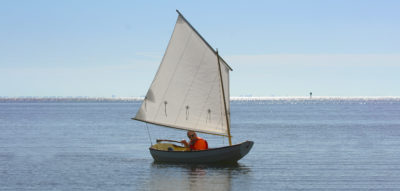
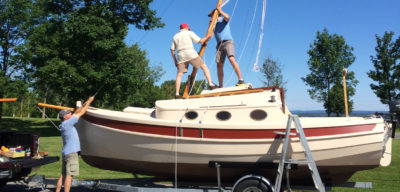
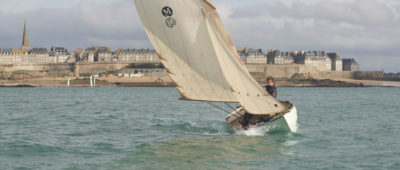
Hello,
I’m from Argentina and looking for more info and plans about this boat.
Thank you!!
It looks like the plans are available from the designer at Cajune Boats.